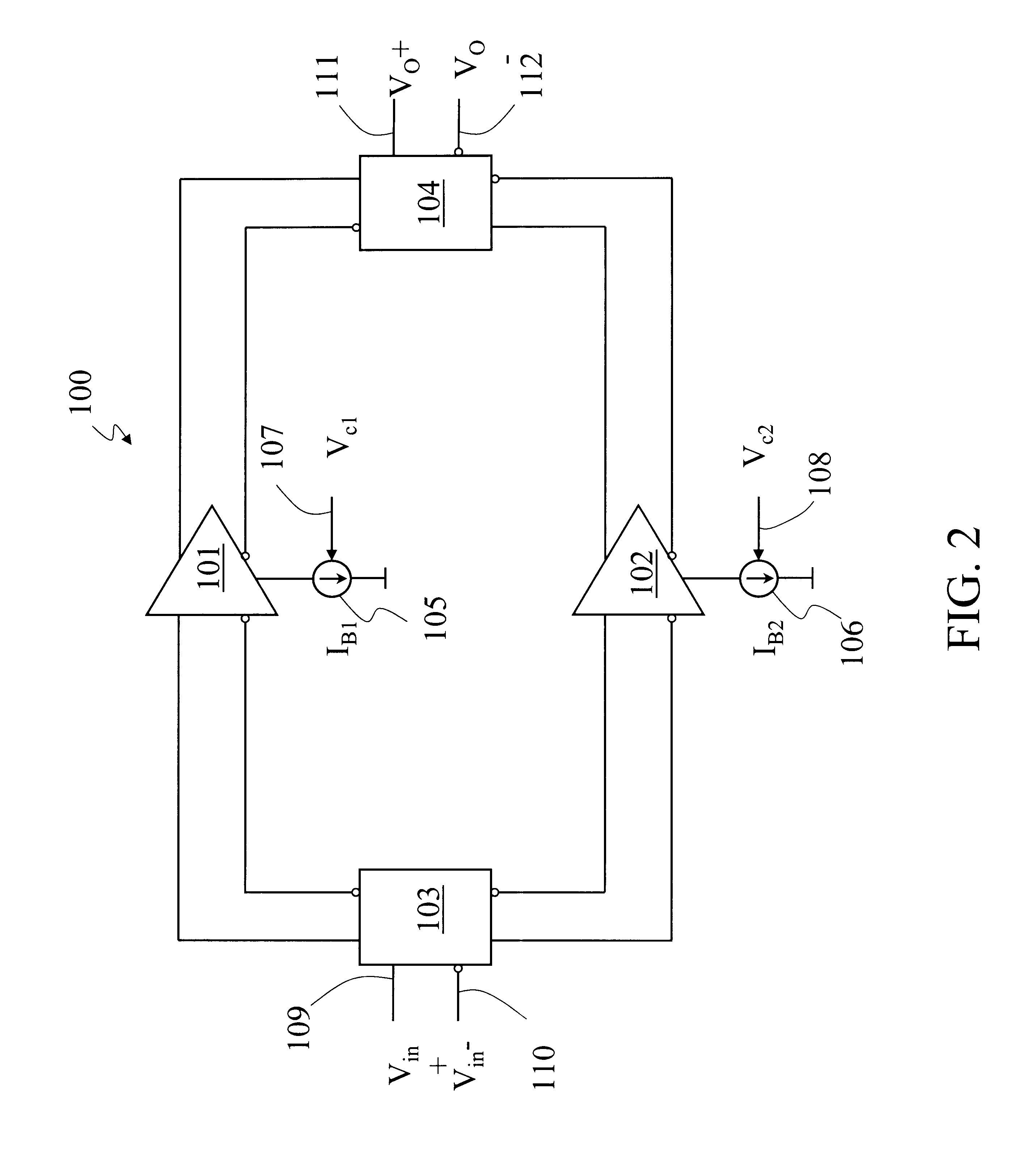Wideband variable gain amplifier with low power supply voltage
a variable gain amplifier and power supply voltage technology, applied in differential amplifiers, amplifiers with semiconductor devices/discharge tubes, amplification control details, etc., can solve the problems of limiting the operational bandwidth, power consumption producing a practical need, and variable gain amplifiers exhibiting this higher rail-to-rail voltag
- Summary
- Abstract
- Description
- Claims
- Application Information
AI Technical Summary
Problems solved by technology
Method used
Image
Examples
Embodiment Construction
FIG. 5 illustrates an alternative embodiment of the present invention. The first gain module 101 is comprised of common-emitter transistors 411 and 412, a current generator 415 and a pair of emitter degeneration resistors 413 and 414. Similarly, the second gain module 102 is comprised of common-emitter transistors 431 and 432, a current generator 435, and emitter degeneration resistors 433 and 434. The bias currents I.sub.B1 105 and I.sub.B2 106 of the gain modules 101 and 102 are provided by transistors 420 and 440 with emitter resistors 421 and 441, respectively. The combining module is comprised of a pair of common-base transistors 441 and 442 with resistive loads 443 and 444.
Each bias current of the gain modules 101 and 102 can be adjusted independently according to the present variable gain amplifier invention. Since the overall gain of the invented variable gain amplifier is determined by the difference of controlled bias current I.sub.B1 and I.sub.B2, it is possible to achiev...
PUM
 Login to View More
Login to View More Abstract
Description
Claims
Application Information
 Login to View More
Login to View More - R&D
- Intellectual Property
- Life Sciences
- Materials
- Tech Scout
- Unparalleled Data Quality
- Higher Quality Content
- 60% Fewer Hallucinations
Browse by: Latest US Patents, China's latest patents, Technical Efficacy Thesaurus, Application Domain, Technology Topic, Popular Technical Reports.
© 2025 PatSnap. All rights reserved.Legal|Privacy policy|Modern Slavery Act Transparency Statement|Sitemap|About US| Contact US: help@patsnap.com



